“Shevitsa”

Team: Mariam Zelimger, Madina Zharkhaeva, Vera Bondarenko, Albina Solodukha
Year: 2025
Location: Pazardzhik, Bulgaria
Concept:
The project is rooted in the concept of Bulgarian shevitsa, a traditional embroidery technique where patterns emerge from careful stitching. In the same way, the master plan weaves heritage into the contemporary fabric of the market.
Urban context:
12,000 m² site divided by Prof. Asen Zlatarov Street; framed by park, square, streets, and shopping center. Central, yet fragmented and lacking cohesion, with potential to extend green corridors and create a multifunctional civic space.
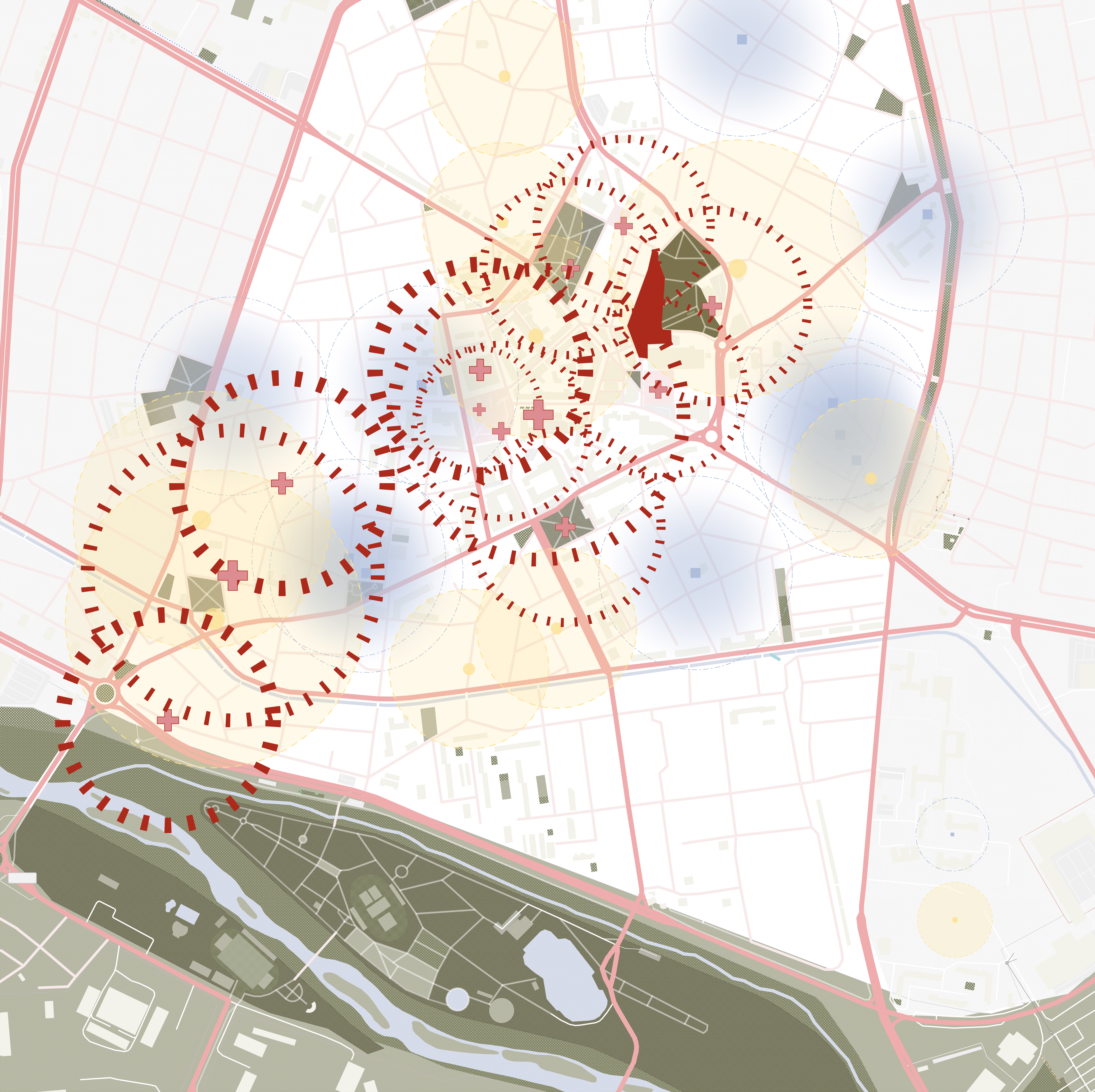
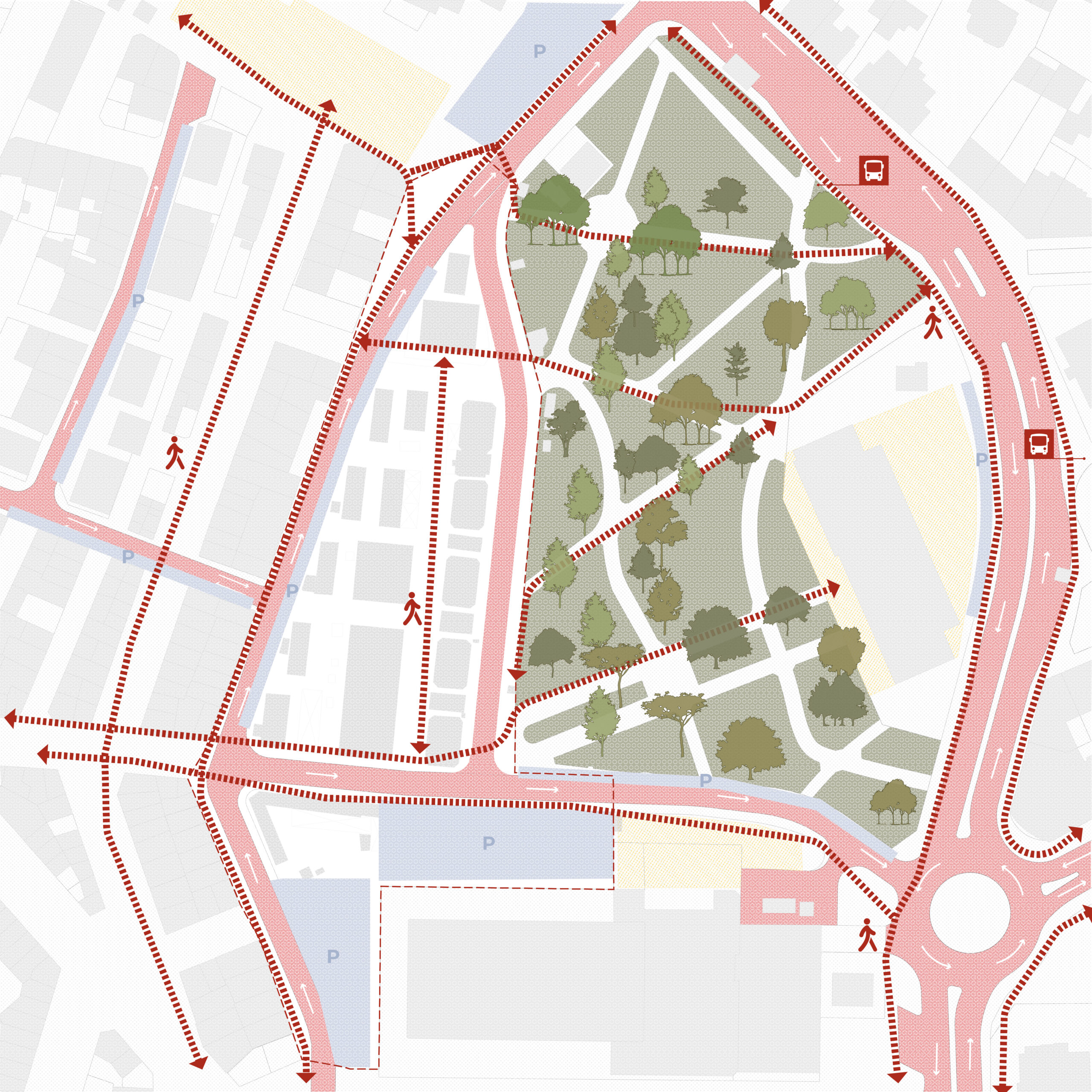
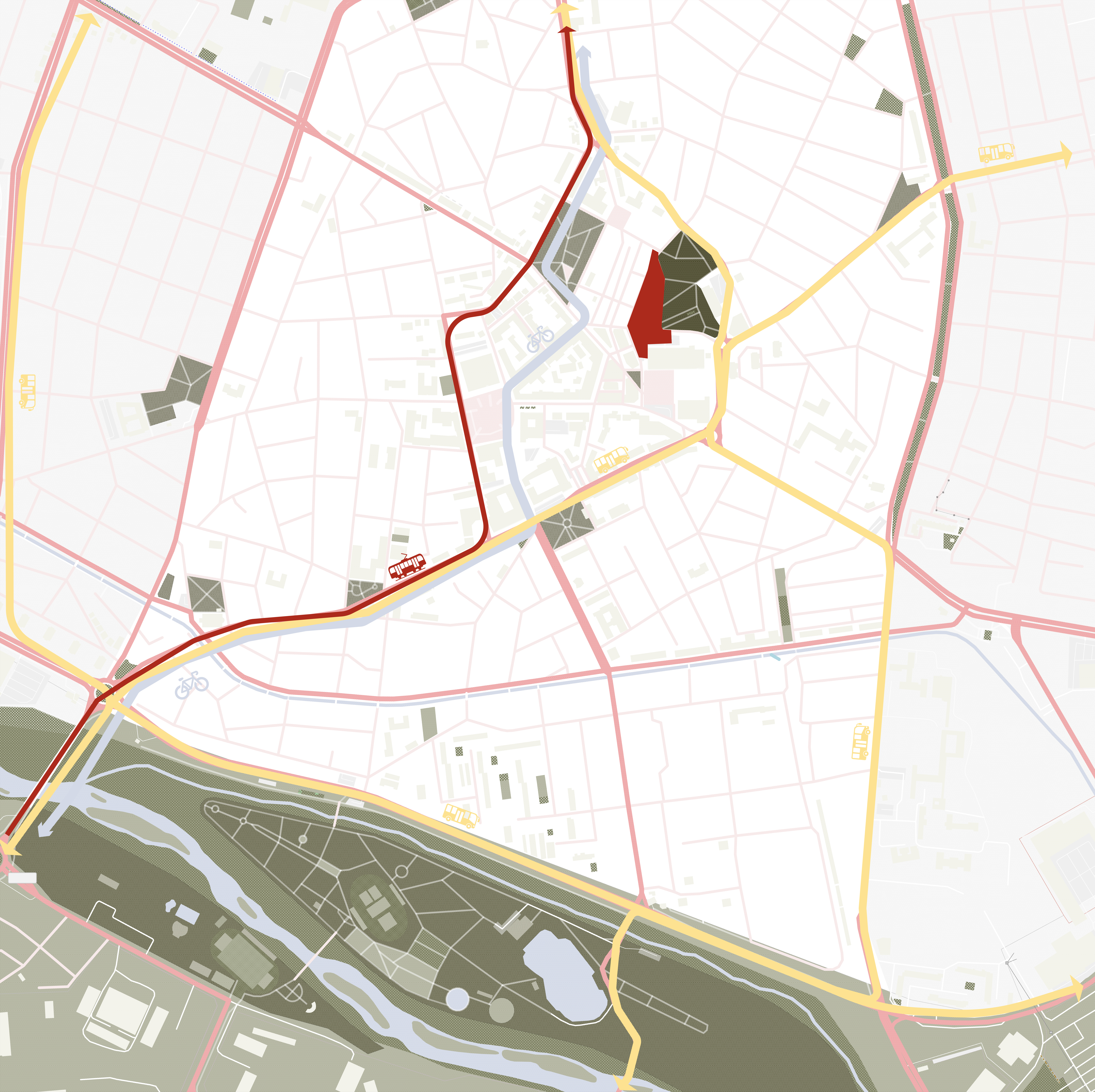
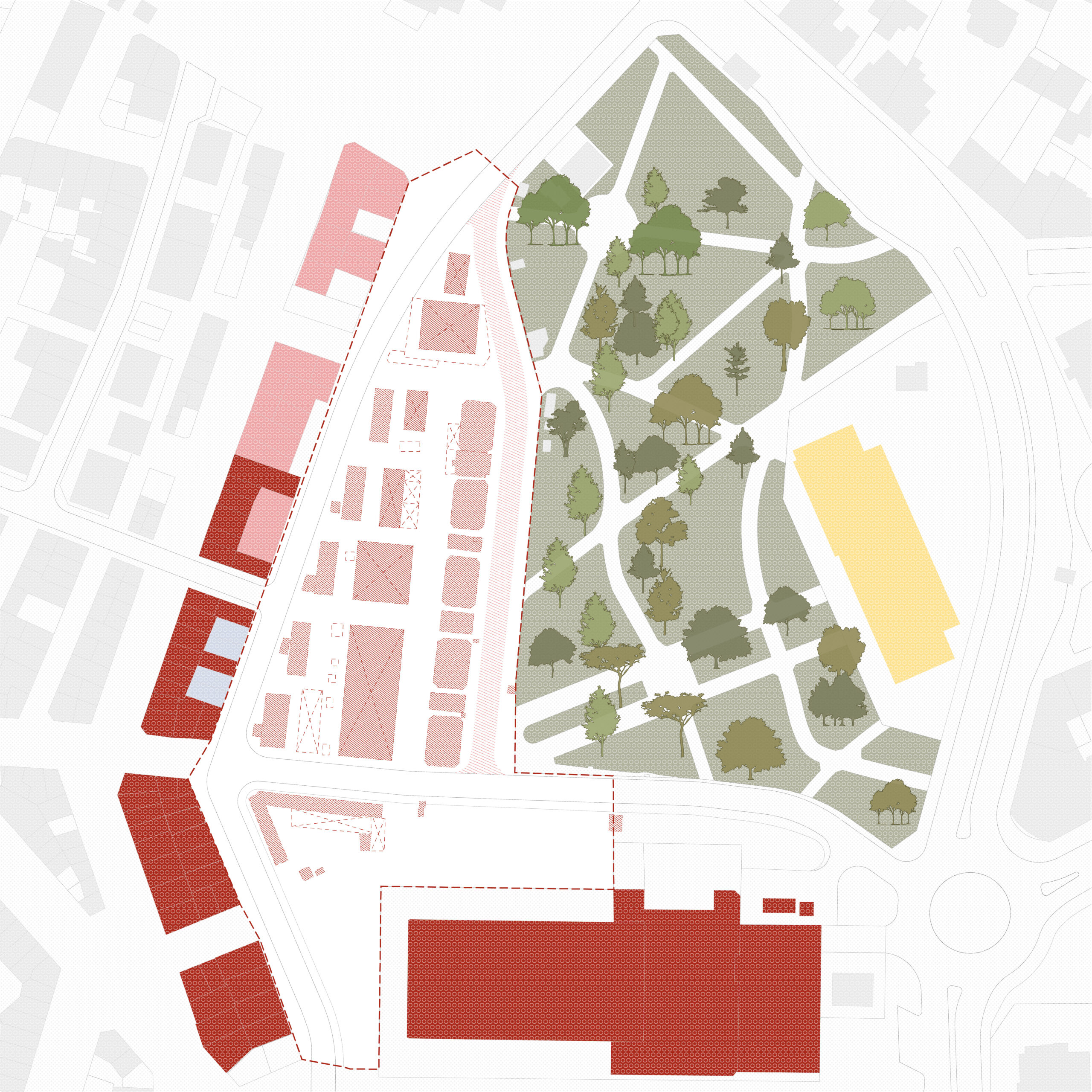
Urban pattern:
The design draws inspiration from Bulgarian cultural heritage, using the traditional Shevitsa pattern as a foundation. This motif is reinterpreted into an architectural language, shaping the geometry of the masterplan and weaving cultural identity into the public realm.

Masterplan:
The masterplan organizes the market around three blocks, three separate market building volumes, linked by a timber canopy, with a central ribbon that extends the park into the city. This ribbon structures movement, defines public spaces, and brings together commerce, leisure, and social interaction, creating a cohesive urban fabric within the site.
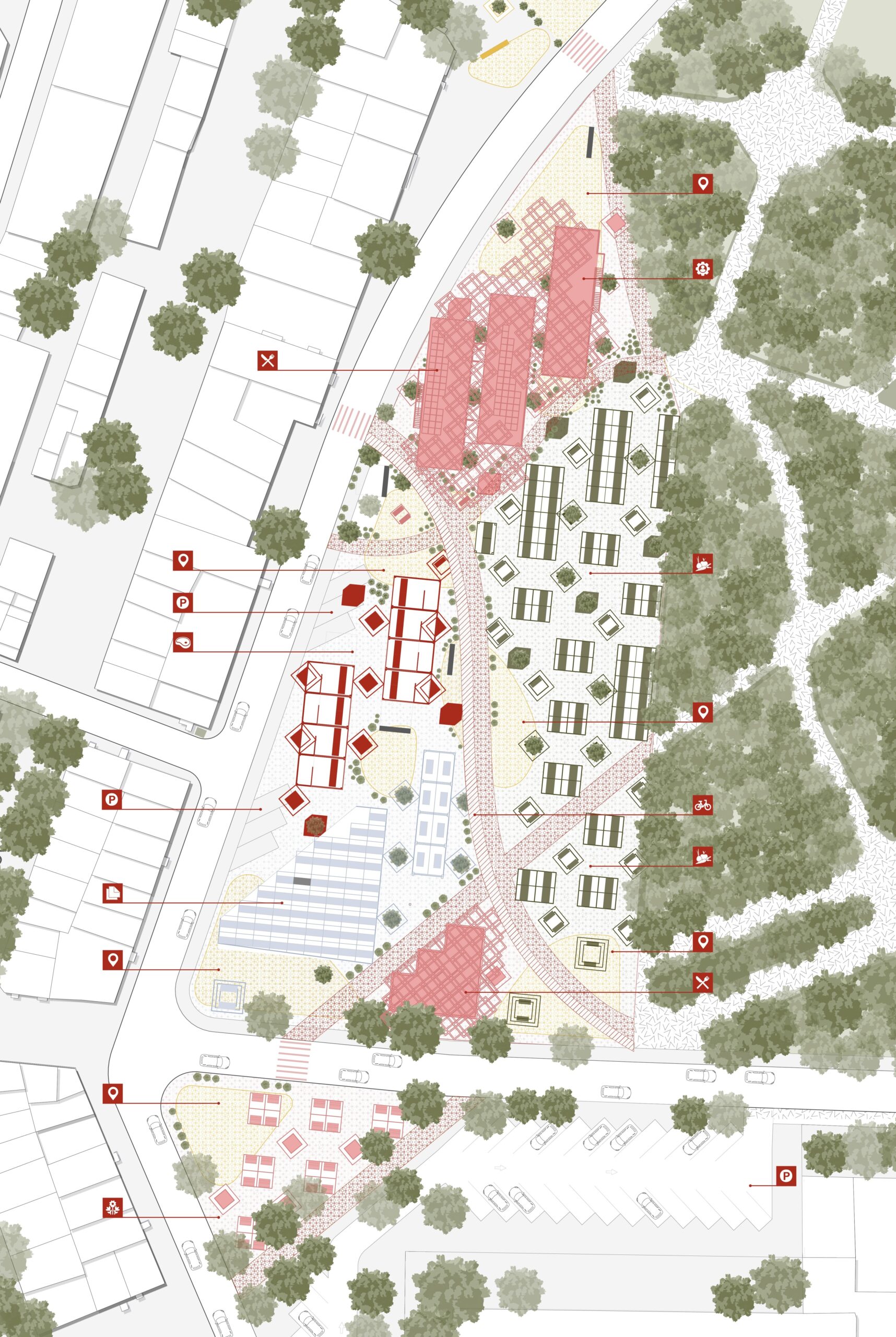
Phasing strategy:
The project is implemented in four phases, gradually preparing the site, extending green networks, introducing market functions, and completing key architectural anchors to establish a cohesive and vibrant civic market.
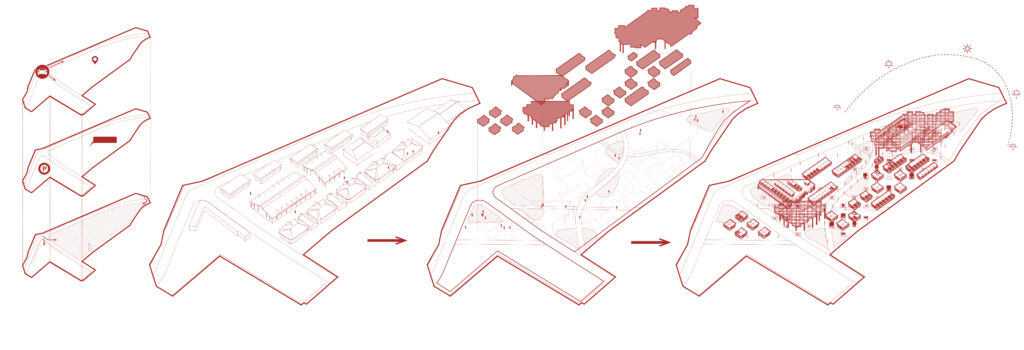
Phase 1 – Preparation:
Demolition of outdated structures and organization of parking and infrastructure.
Phase 2 – Green System:
Extension of the park and creation of pedestrian connections, making the site usable as public space.
Phase 3 – Market Functions:
Construction of new stalls and pavilions for fruits, vegetables, meat, and dairy, gradually transferring existing trade into modern facilities.
Phase 4 – Architectural Anchors:
Completion of larger architectural elements such as the café, administration building, and social spaces, establishing a strong civic identity for the market.
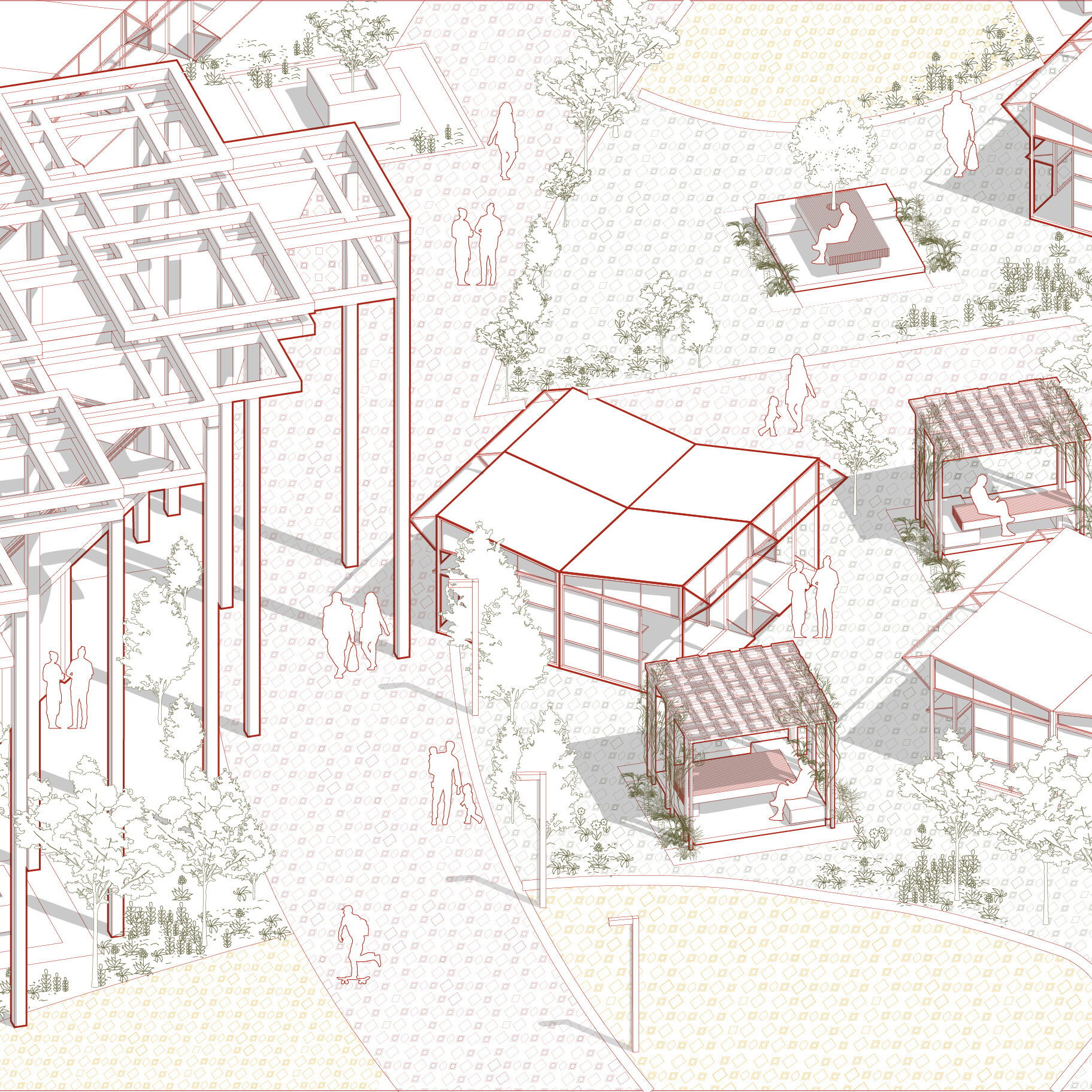
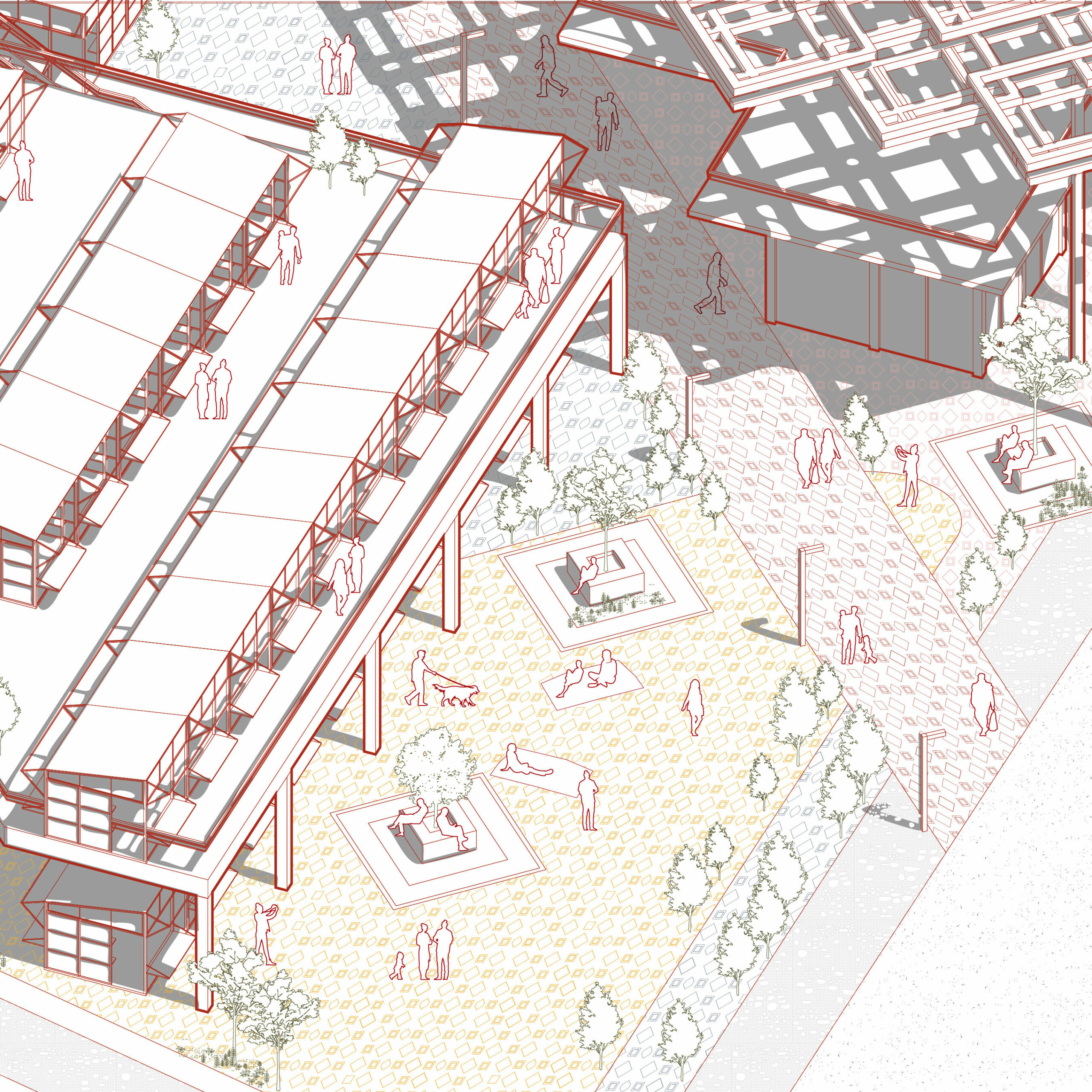
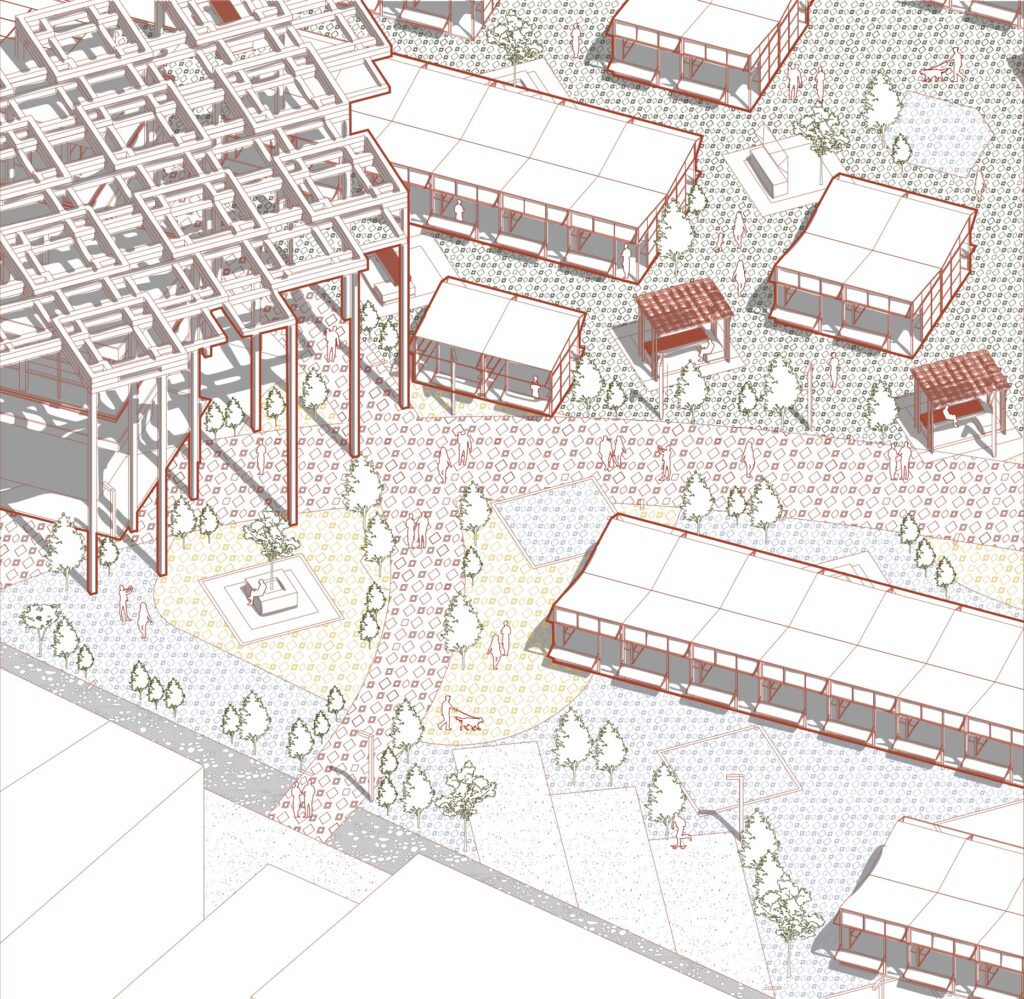
Architectural anchors:
The design introduces cafés, administration areas, and community pavilions that strengthen the civic identity of the market. Cafés line key circulation paths, spilling into outdoor seating shaded by the timber canopy, blurring the boundary between park and market and inviting visitors to pause, meet, and enjoy the greenery. A rooftop terrace hosts exhibitions, gatherings, and seasonal events, extending social life across the site.
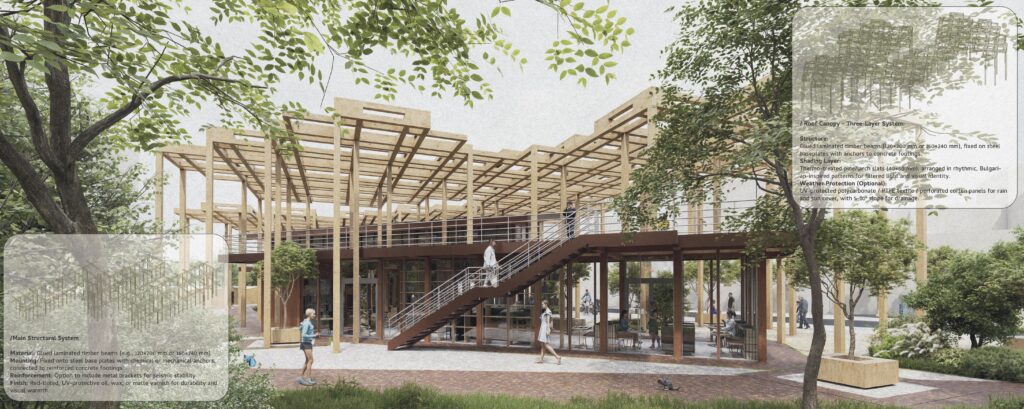


Architecture as everyday framework:
Guided by the idea that architecture should accompany daily life, the timber canopy filters sunlight, channels wind, and creates comfortable microclimates. The market becomes a flexible framework for collective life, adaptable across seasons and urban rhythms.
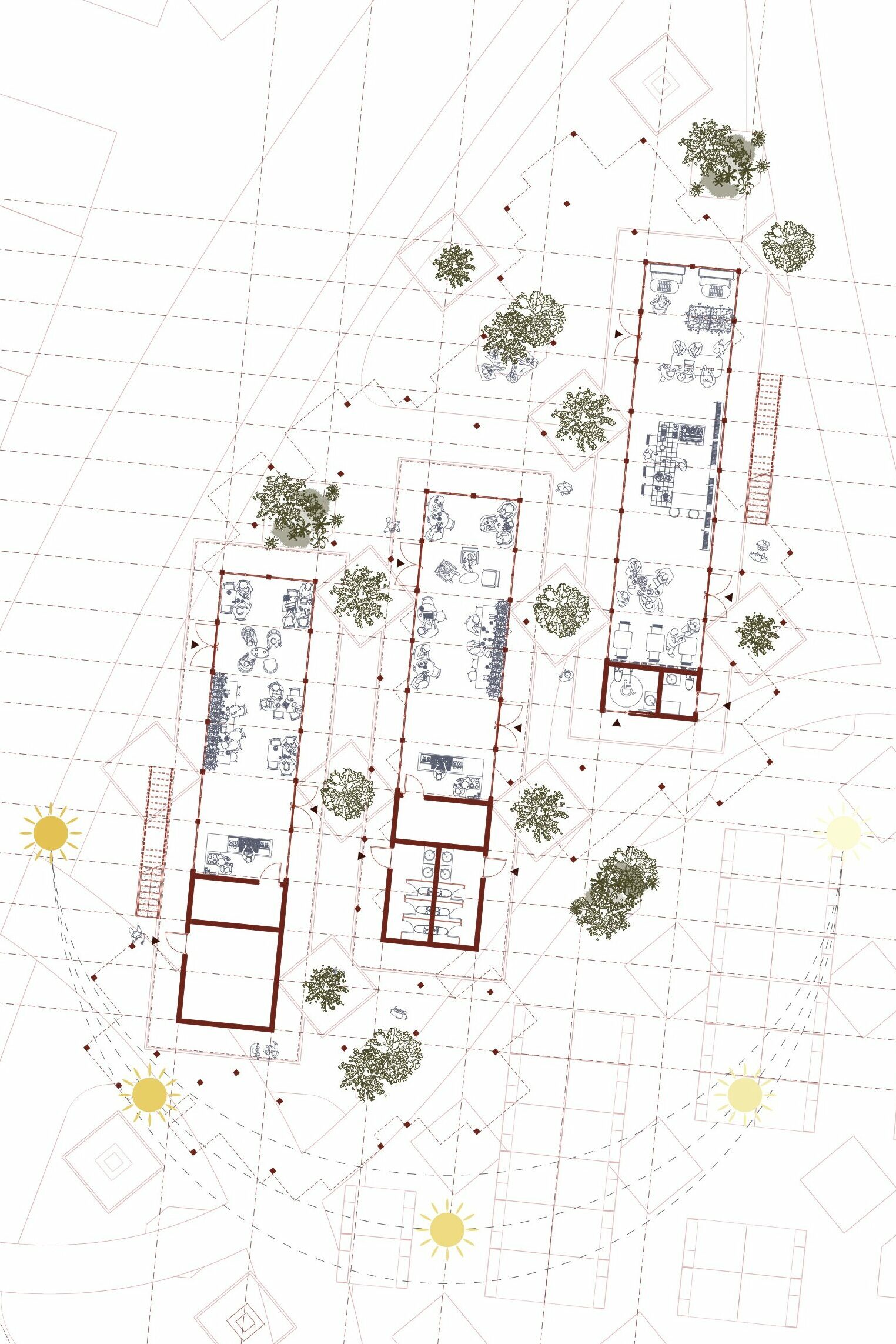
Cultural geometry and wooden logic:
The canopy draws on Bulgarian ornamental traditions, using layered timber slats for shade, ventilation, and depth. Wood is chosen for its warmth, tactility, and sustainability, with a red-tinted finish recalling local clay and rooftops. By responding to sun and wind, the architecture aligns with ecology while celebrating heritage, creating a living, inclusive civic space.
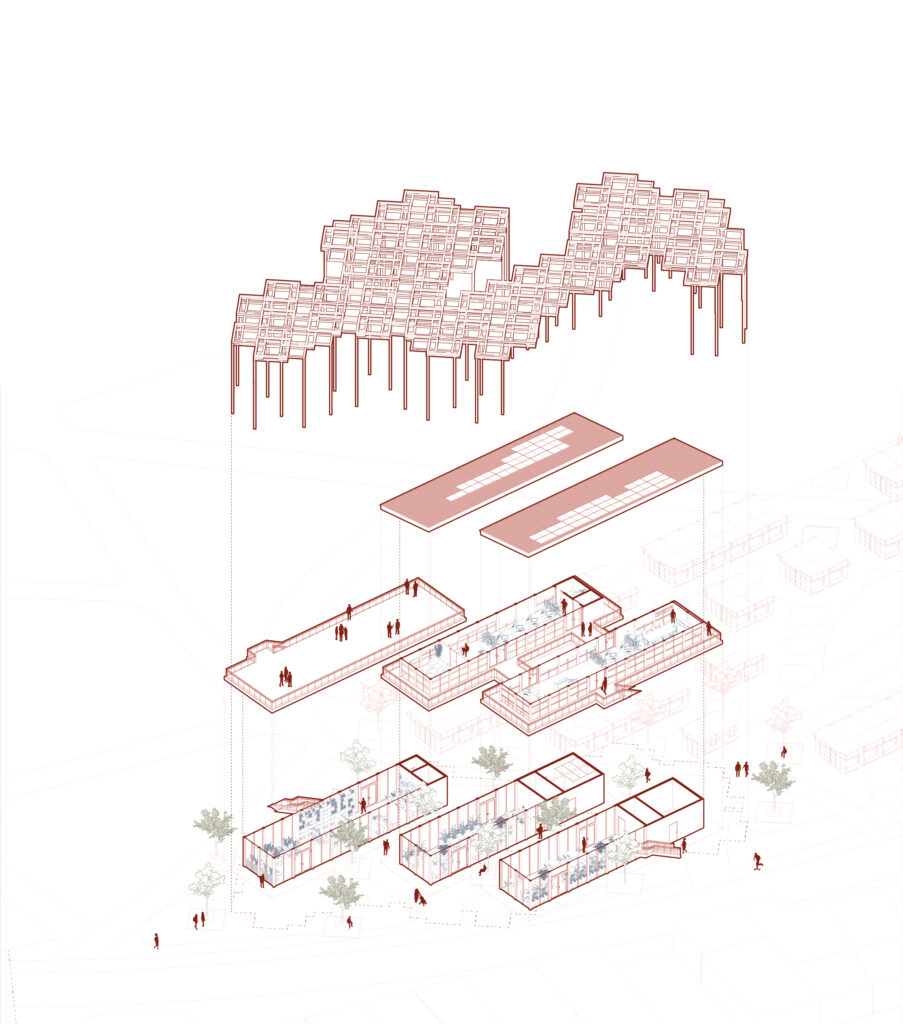
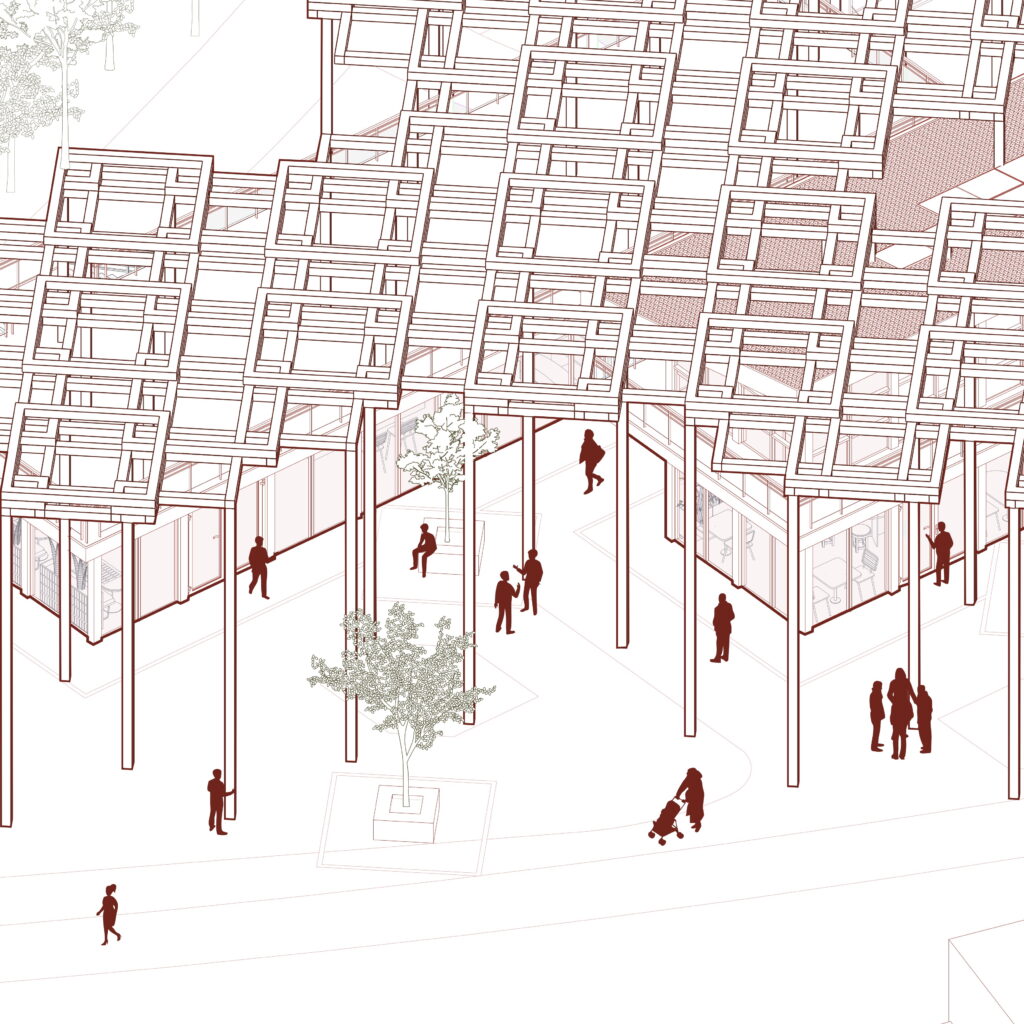
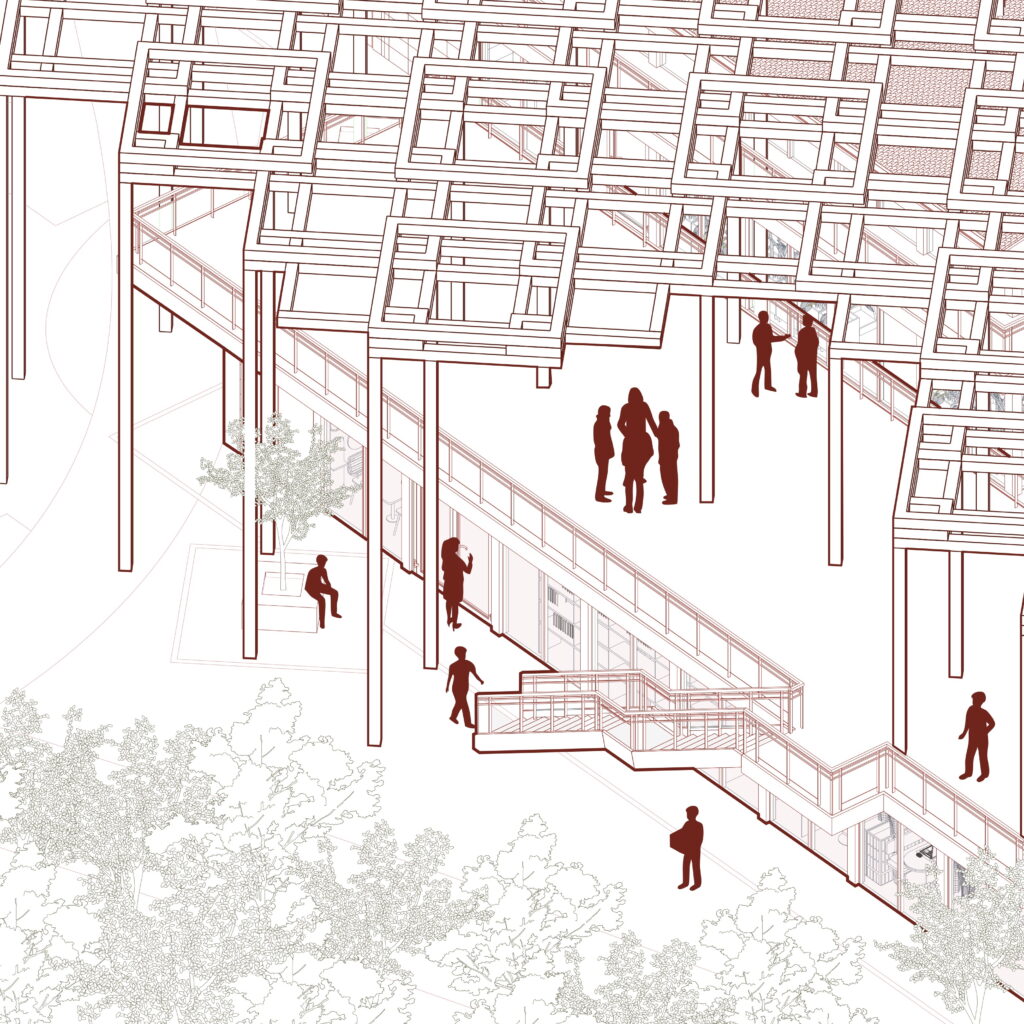
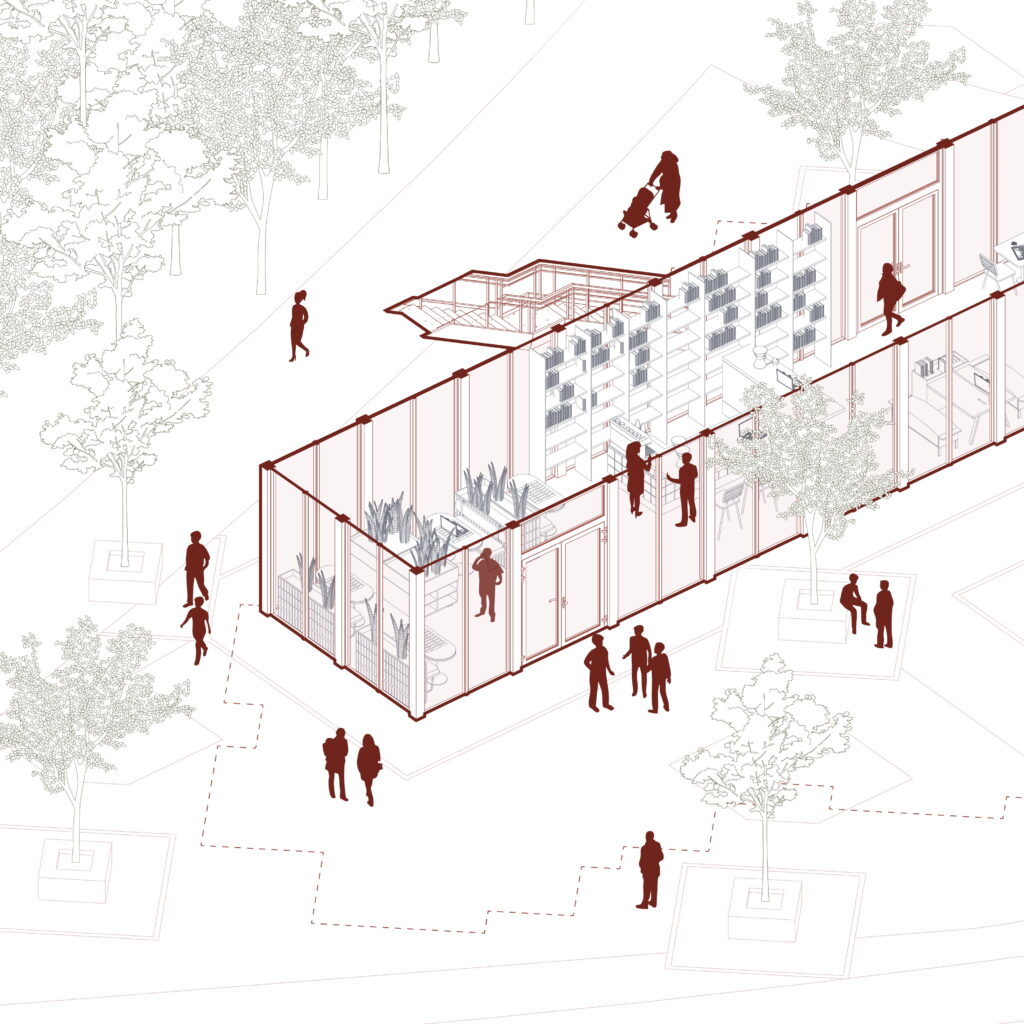
Roof Canopy – Three-Layer System:
Structure: Glued laminated timber beams (120×200 mm or 160×240 mm), fixed on steel baseplates with anchors to concrete footings.
Shading Layer: Thermo-treated pine/larch slats (40×80 mm), arranged in rhythmic, Bulgarian-inspired patterns for filtered light and visual identity.
Weather Protection (Optional): UV-protected polycarbonate / PTFE textile / perforated corten panels for rain and sun cover, with 5–10° slope for drainage.
Main Structural System:
Material: Glued laminated timber beams (e.g., 120×200 mm or 160×240 mm)
Mounting: Fixed onto steel base plates with chemical or mechanical anchors, connected to reinforced concrete footings
Reinforcement: Option to include metal brackets for seismic stability
Finish: Red-tinted, UV-protective oil, wax, or matte varnish for durability and
visual warmth
Modular system and flexibility:
The market is structured around a modular glulam frame, resting on concrete footings with standardized steel joints for strength and ease of assembly. This system allows phased construction, simple maintenance, and long-term adaptability.
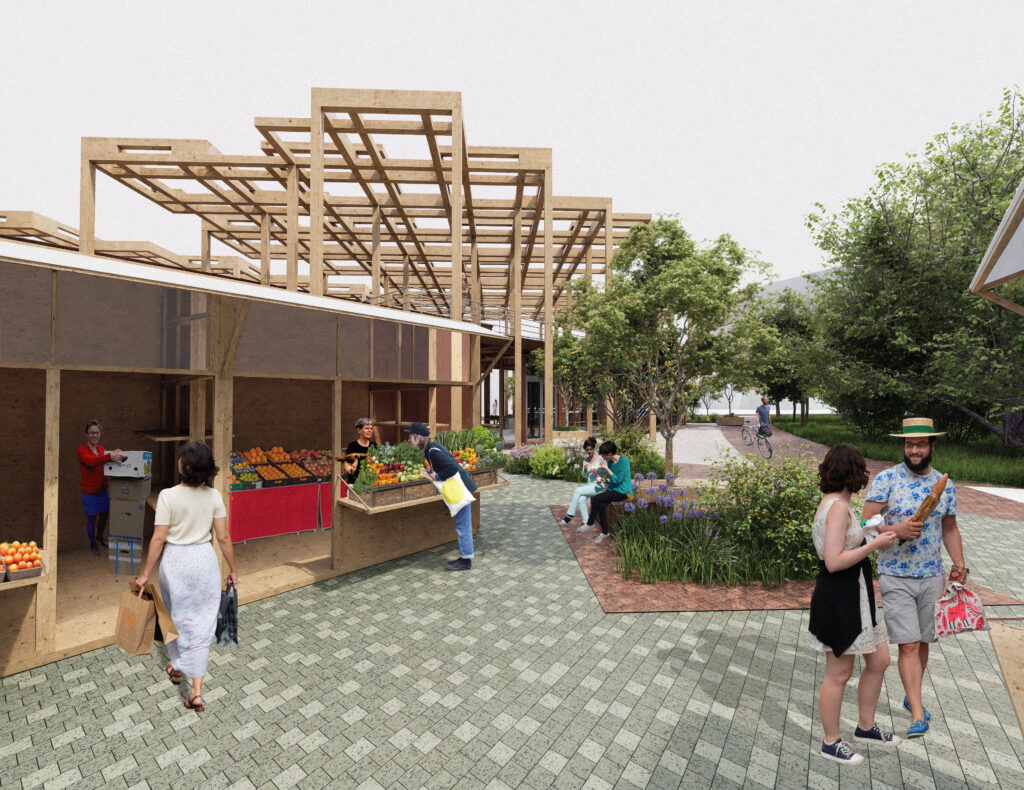
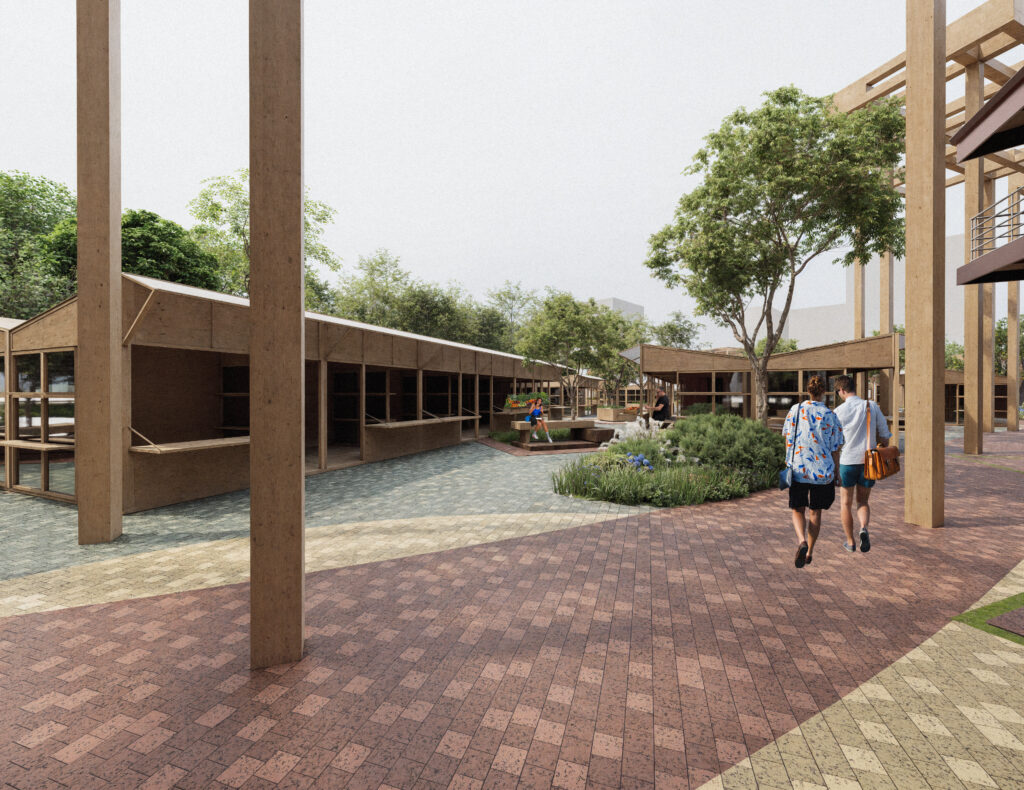
The area is organized into color-coded modules: green for fruits and vegetables, red for meat, blue for industrial goods, and yellow for flowers. Designed as sustainable, lightweight units, they are easy to assemble, relocate, or dismantle, ensuring the market can evolve with changing needs. Each module is equipped with electricity, supporting refrigeration and diverse vendor uses.
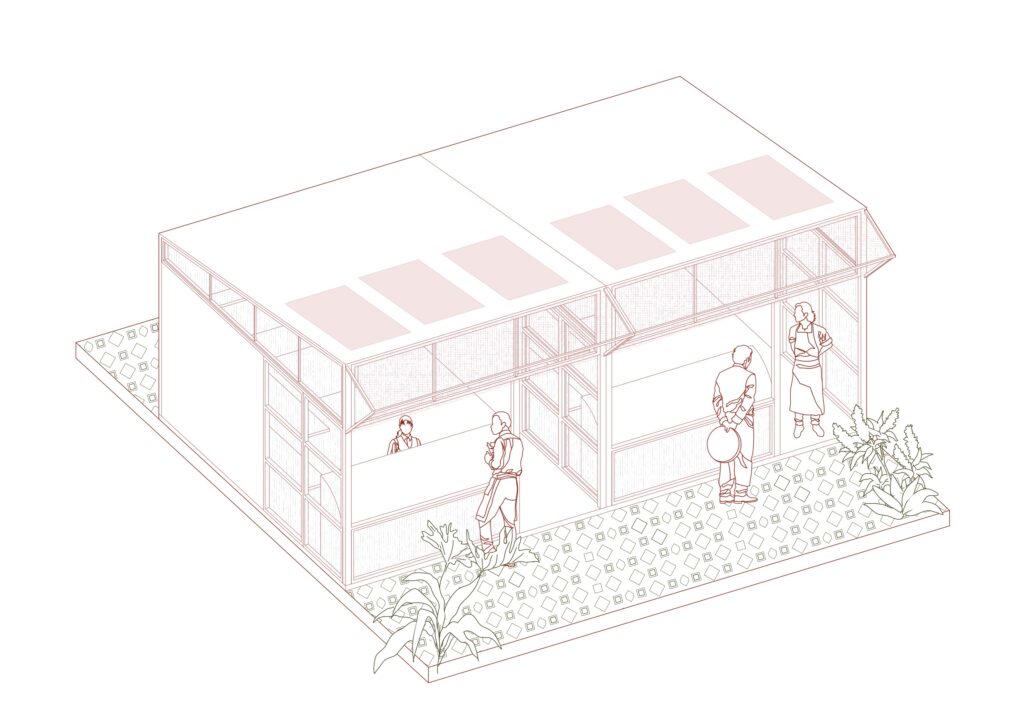
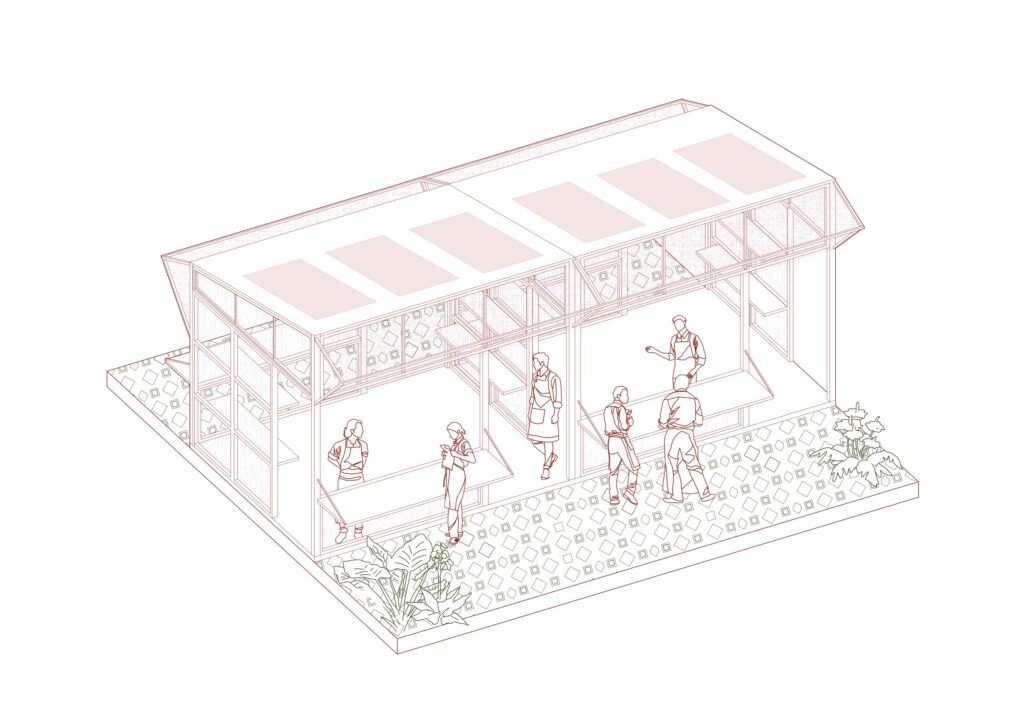
Construction logic:
The modular design ensures constructive realism – balancing ambition with feasibility. Prefabricated timber elements are combined with lightweight polycarbonate glazing, offering durability and affordability. Canopy elements can fold down for closure, while stall modules can be reconfigured or replaced without disrupting the wider structure. This approach reduces costs, speeds up assembly, and ensures the market remains resilient, adaptable, and future-proof.
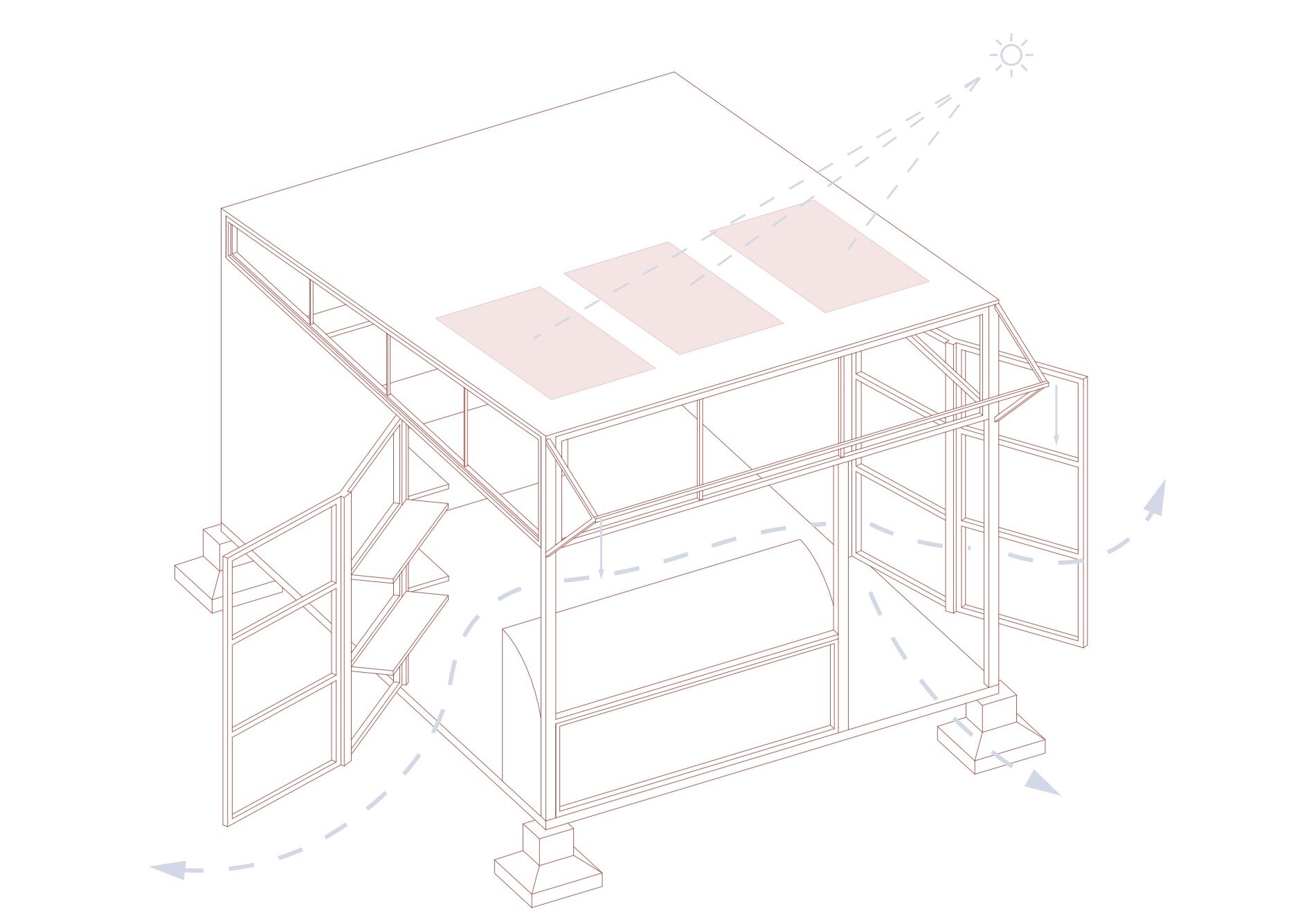
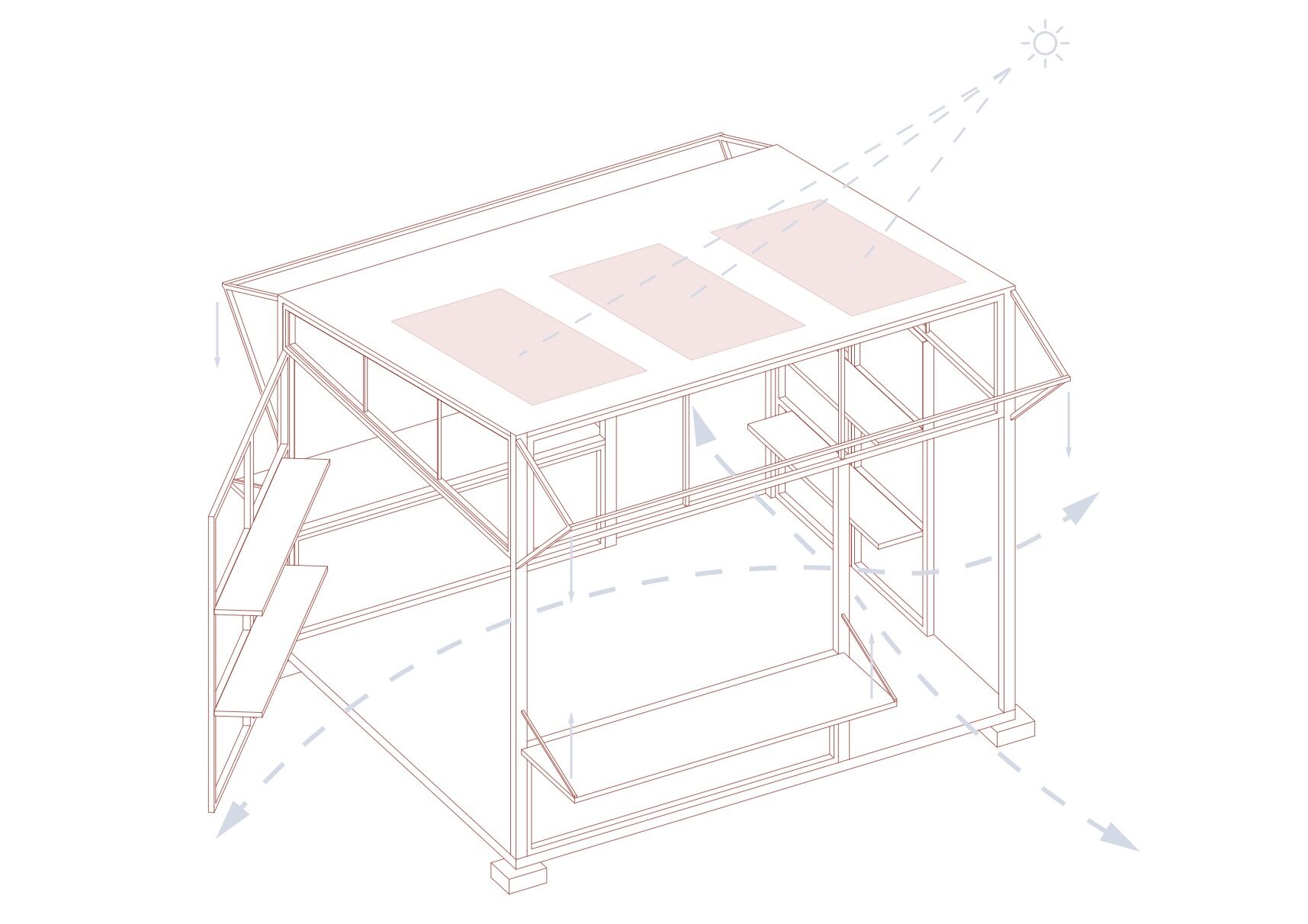

Shevitsa transforms the market into a vibrant civic space, where modular stalls for fruits, vegetables, meat, industrial goods, and flowers are woven together under a sculptural timber canopy. Cafés, terraces, and public areas extend social life, while the canopy frames movement and encounters, blending heritage, commerce, and community into a cohesive, inclusive urban destination.
Rooted in tradition yet adaptable, Shevitsa is a resilient, inclusive, and future-ready urban destination.